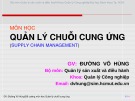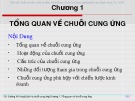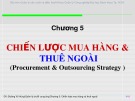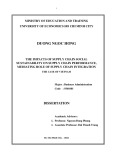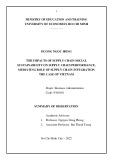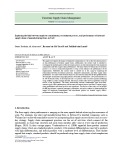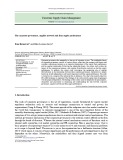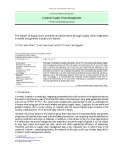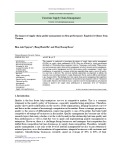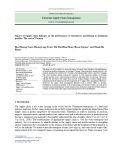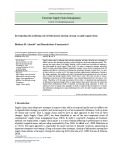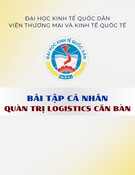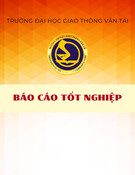
* Corresponding author
E-mail address: haitham.alzubi@skylineuniversity.ac.ae (H. M. Alzoubi)
© 2020 by the authors; licensee Growing Science.
doi: 10.5267/j.uscm.2019.12.004
Uncertain Supply Chain Management 8 (2020) 273–284
Contents lists available at GrowingScience
Uncertain Supply Chain Management
home
p
a
g
e: www.Growin
g
Science.com/usc
m
Investigating the mediating role of information sharing strategy on agile supply chain
Haitham M. Alzoubia* and Ramakrishna Yanamandrab
aAssociate Professor of Management Skyline University College, United Arab Emirates
bAssistant Professor of Management, Skyline University College, United Arab Emirates
C H R O N I C L E A B S T R A C T
Article history:
Received October 25, 2019
Received in revised format
November 26, 2019
Accepted December 28 2019
Available online
December 29 2019
Supply chains need to redesign their existing strategies and must develop new strategies to
effectively face the challenges posed by certain disruptions, both man-made and natural. This
requires the supply chains to be highly flexible, visible, reliable and cost-effective leading to
the achievement of Agile Supply Chain (ASC). In today’s competitive market, achieving
agility in supply chain needs dynamic leadership, strategic vision, mutual cooperation from all
members and effective utilization of information technology through customer focus. In spite
of their initiatives to achieve ASC for improving their organizational performance, barring a
few large companies, the medium and small size manufacturing companies have not yet been
able to adopt and design supply chains which lead to ASC. This may be due to various
challenges in the process of achieving agility. Also, the published literature in this area is very
scanty. Therefore, to fill this gap, the purpose of this study is to determine the mediating role
of Information Sharing Strategy (ISS) on Agile Supply Chain (ASC) practices for achieving
Supply Chain Performance (SCP) in medium size manufacturing companies in UAE. An
empirical survey of supply chain managers in UAE is conducted for this purpose. It is found
that information sharing plays a major mediating role in ASC to achieve superior supply chain
performance.
.license Growin
g
Science, Canada2020 b
y
the authors; ©
Keywords:
Agile supply chain practices
Information sharing strategy
Supply chain performance
Medium Size Manufacturing
Companies
Supply Chain Agility
1. Introduction
Supply chains must adopt new strategies to improve their ability to respond rapidly and cost effectively
to unpredictable changes in markets and increasing levels of environmental turbulence, both in terms
of volume and variety. That is, supply chains need to have an agile approach to deal with all these
changes. Agile Supply Chain (ASC) has been identified as one of the most important issues of
contemporary supply chain management (Lee, 2004). In today’s constantly changing environment,
medium size organization’s supply chain agility is a critical element affecting its performance in terms
of global competitiveness and providing sustainability (Lee, 2004; Swafford et al., 2006; Mehralian et
al., 2015). The agile approach is responsible for quick reaction to demand variations, generating an
important competitive advantage. Along with many other strategies, sharing of information among their
supply chain entities is the major strategy for achieving ASC (Azevedo et al., 2008; Stevens & Johnson,
2016).






